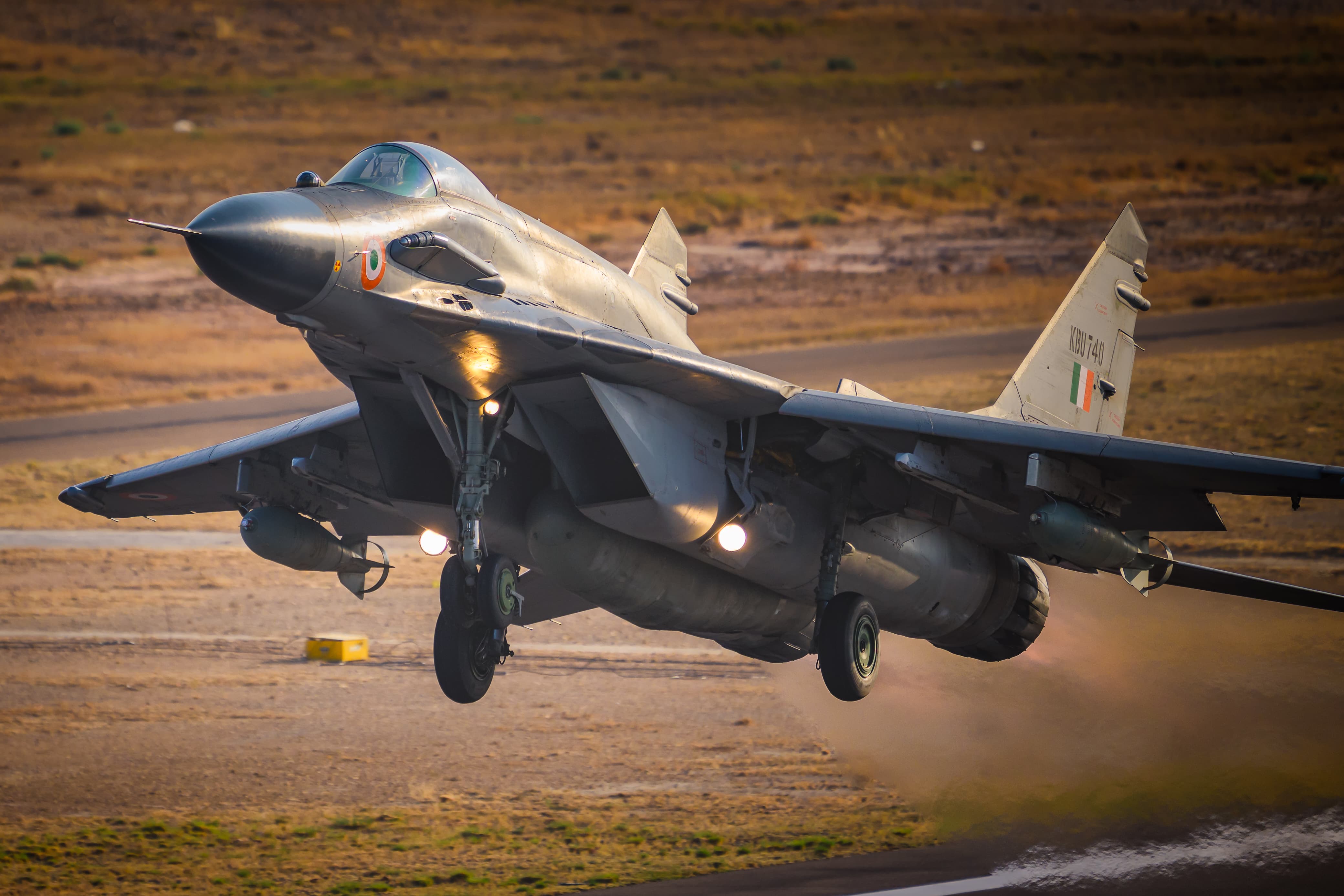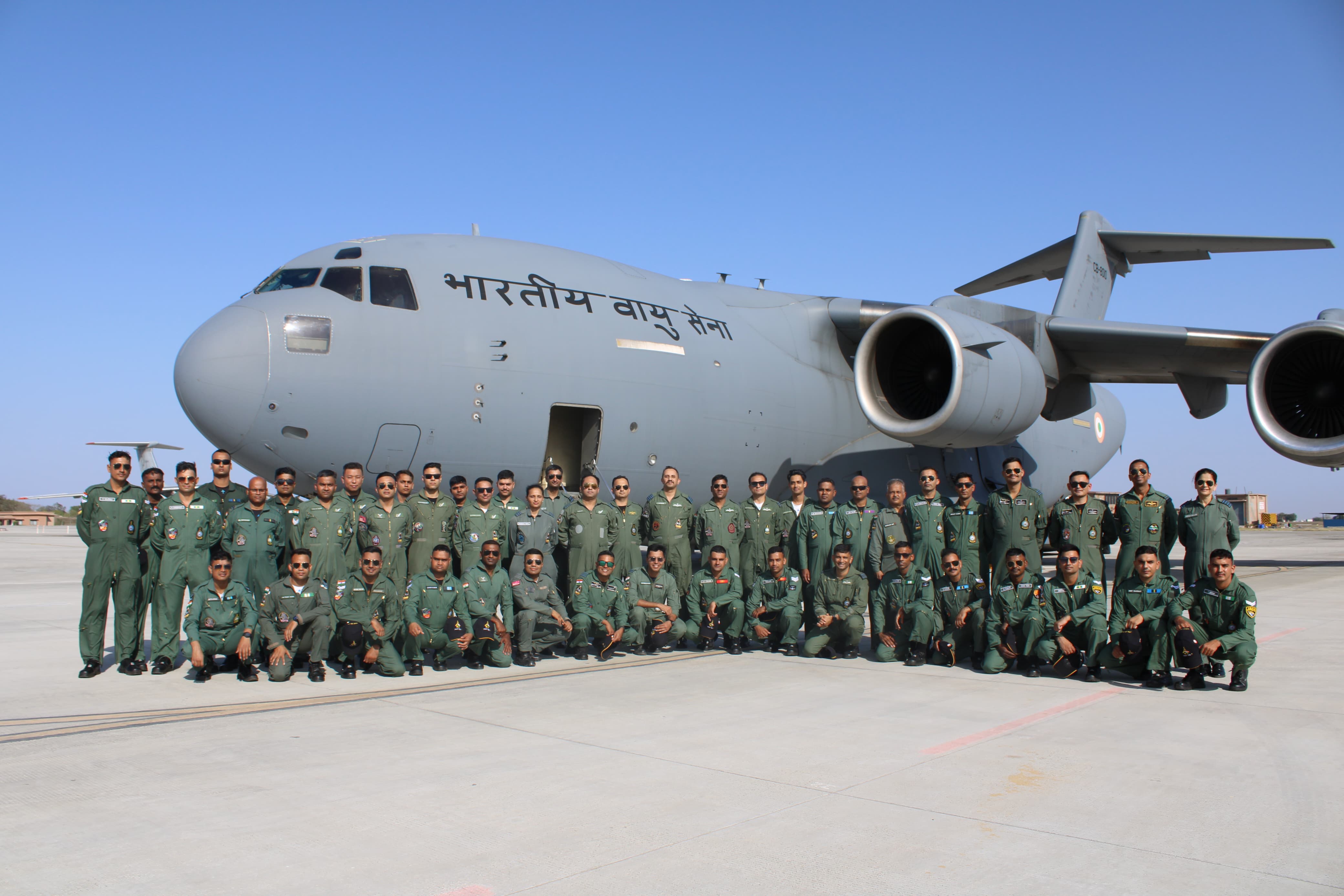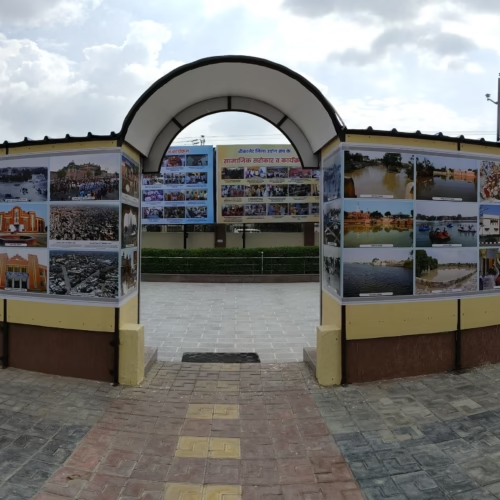INDIAN AIR FORCE JOINS MULTINATIONAL AIR COMBAT DRILL DESERT FLAG-10 IN UAE
By Defense Journalist Sahil
Al Dhafra Air Base, UAE / New Delhi | April 21, 2025
In a significant step towards bolstering international military cooperation and enhancing interoperability, the Indian Air Force (IAF) has joined the prestigious multinational air combat exercise Desert Flag-10, being held at the Al Dhafra Air Base in the United Arab Emirates. The exercise, hosted by the UAE Air Force, will take place from April 21 to May 8, 2025, bringing together elite air forces from around the globe to engage in high-intensity air combat drills and coordinated missions.
The Indian Air Force contingent, comprising frontline MiG-29 and Jaguar fighter aircraft, along with a team of pilots, engineers, technical staff, and mission planners, has already touched down at the sprawling airbase located in the arid expanse of the Emirati desert. This marks another chapter in India’s continued emphasis on participating in international defense collaborations and strengthening its strategic footprint in the West Asian region.
Global Gathering of Elite Air Forces
Exercise Desert Flag is recognized as one of the most prominent multilateral air warfare exercises in the world. Apart from the host nation UAE and India, this year’s edition features participation from Australia, Bahrain, France, Germany, Qatar, Saudi Arabia, the Republic of Korea, Turkey, the United Kingdom, and the United States. The broad range of participating countries reflects the growing importance of joint exercises in addressing evolving global security challenges, particularly in the air domain.
Each nation has deployed advanced aircraft and combat platforms, including fourth and fifth-generation fighters, AWACS (Airborne Warning and Control System) aircraft, aerial refuelers, and ground support systems. The exercise provides a high-pressure, realistic battle environment to test aircrew readiness, mission planning, multi-domain integration, and operational coordination under dynamic scenarios.
.
8053.jpeg)


High-End Combat Training & Strategic Objectives
The aim of Desert Flag-10 is to provide a platform for the participating air forces to engage in complex and diverse aerial combat operations, simulate real-world missions, and conduct joint planning and execution of air campaigns. Scenarios include offensive counter-air operations, air interdiction missions, beyond-visual-range engagements, and close air support drills. These engagements are designed to push the envelope in terms of tactics, coordination, and rapid decision-making in high-stakes operational settings.
“The Indian Air Force’s participation in Desert Flag-10 represents a unique opportunity for our air warriors to operate alongside some of the most capable air forces in the world,” said a senior IAF official. “It also underscores India’s commitment to deepening defense cooperation, enhancing mutual trust, and promoting regional security.”
Focus on Interoperability and Knowledge Sharing
A key pillar of Desert Flag is the exchange of best practices, doctrines, and lessons learned from recent operations and exercises. The IAF contingent will participate in joint mission briefings, debriefings, and interactive sessions to share experiences in aircraft employment, electronic warfare, precision targeting, and airspace management.
Through these interactions, the Indian Air Force gains vital insights into global standards of air combat and integrates learnings into its own tactical and strategic frameworks. Such exercises not only refine individual pilot skills and team coordination but also help standardize procedures for coalition operations in times of conflict or humanitarian crises.
Strengthening Strategic Ties and Regional Stability
India’s participation in Desert Flag-10 reflects its increasing strategic engagement with the Gulf region and other key global powers. In recent years, New Delhi has stepped up defense diplomacy with several West Asian and European nations, conducting joint military exercises, high-level exchanges, and expanding security dialogues.
The IAF’s presence at Al Dhafra is symbolic of India’s aspirations to be a net security provider in the Indo-Pacific and West Asia, ensuring peace, stability, and open sea-air lanes. It is also in line with India’s growing emphasis on defense indigenization, operational modernization, and professional excellence on the global stage.
Moreover, the exercise comes at a time when aerial threats, including the use of drones, cruise missiles, and hypersonic platforms, are reshaping the nature of air warfare. Participation in multi-national platforms like Desert Flag enables the IAF to stay ahead of the curve in adapting to these emerging threats.
Conclusion
As the skies over the UAE roar with the sounds of afterburners and the precision maneuvers of cutting-edge fighters, the Indian Air Force’s flag flies high among a coalition of global air powers. Desert Flag-10 stands not only as a testament to international military











Add Comment